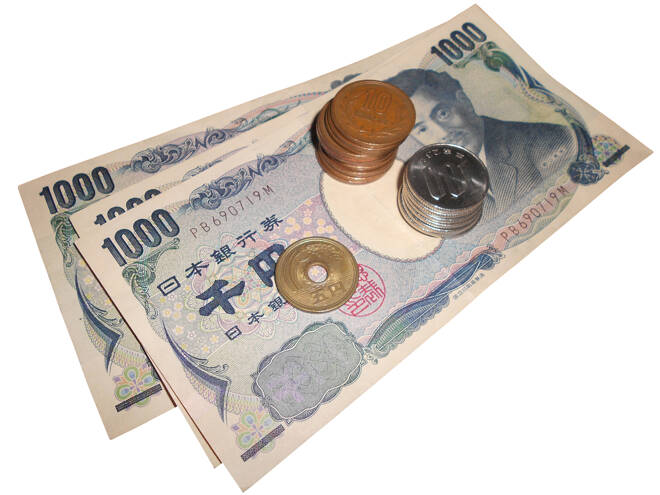Advertisement
Advertisement
USD/JPY Trend Up, but Vulnerable to Correction
By:
Vertical rises in a market tend to get volatile, but the corrections often start with a simple change in the pattern.
The Dollar/Yen is taking a breather early Tuesday after posting its worst performance in 16 months the previous session, as the Bank of Japan pins down bond yields at a time when they are rising sharply in the rest of the world.
At 07:37 GMT, the USD/JPY is trading 123.613, down 0.299 or -0.24%. On Monday, the Invesco CurrencyShares Japanese Yen Trust settled at $75.67, down $1.05 or -1.37%.
According to Reuters, Japan’s central bank bought a little more than $500 million in bonds on Monday and has vowed three more days of unlimited purchases to defend its 10-year yield target of 0.25%.
By buying government bonds, the Bank of Japan is capping or driving down yields. This is a form of loosening policy. At the same time, the U.S. Federal Reserve is tightening policy by raising interest rates.
The demonstration of resolve to keep Japan’s monetary policy ultra-easy, underscores the stark contrast with an ever-more-hawkish sounding U.S. central bank. This divergence in monetary policy essentially pushed the Japanese Yen off a cliff.
Daily Swing Chart Technical Analysis
The main trend is up according to the daily swing chart. A trade through 125.101 will signal a resumption of the uptrend.
A move through 114.651 will change the main trend to down. This is highly unlikely, but due to the prolonged move up in terms of price and time, the Dollar/Yen is still vulnerable to a potentially bullish closing price reversal top.
The main range is 113.472 to 125.101. Its retracement zone at 119.286 to 117.914 is the nearest major downside target area.
Potential support levels include the former main tops at 123.536 and 121.678.
Daily Swing Chart Technical Forecast
The uptrend is strong but if the conditions are right, it will take care of itself. I think the main concern should be protecting profits for long traders and perhaps looking for aggressive counter-trend shorting opportunities. The latter is a risky proposition, however.
Vertical rises in a market tend to get volatile, but the corrections often start with a simple change in the pattern. One pattern change could be a bigger-than-previously seen down move. Another pattern would be a lower-low. We haven’t seen one of those since March 4.
More frequent lower closes could also be a sign that the selling is greater-than-the buying at current price levels. On March 25, the USD/JPY posted its first lower close since March 17. Six session went by before we saw that move. A lower close on Tuesday will market the second day since Friday’s lower close. Will this be enough to say the selling pressure is increasing?
Holding on to a long position until the trend changes means your stop is under 114.651. Waiting until the retracement zone fails means your stop is under 117.914. Waiting until a new minor top is formed means your stop is under 122.024.
Without a closing price reversal top chart pattern, the best place to place a sell stop is under Friday’s low at 121.181. Taking out this level won’t change the main trend to down, but it could trigger an acceleration to the downside.
Last week’s close at 122.093 could also become an important level later in the week.
For a look at all of today’s economic events, check out our economic calendar.
About the Author
James Hyerczykauthor
James Hyerczyk is a U.S. based seasoned technical analyst and educator with over 40 years of experience in market analysis and trading, specializing in chart patterns and price movement. He is the author of two books on technical analysis and has a background in both futures and stock markets.
Advertisement
